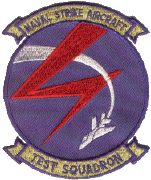
|
Digital Flight Control System An F-14D from NAWC AD Patuxent River flew for the first time 14 July 1995 using a new Digital Flight Control System (DFCS) designed to protect aviatiors against unrecoverable flat spins and carrier landing mishaps. Today the system is in service in the Fleet, the first installations occurred in June 1998 at VF-14 and VF-41. These squadrons were the first to deploy with DFCS. The Fleet is now approx 2/3 DFCS-equipped, the final installations will be complete in early 2001. Since the Tomcat's introduction in the early 1970's, aircraft losses as a result of departures from controlled flight during high angle of attack manuevering and carrier landing mishaps have been well documented. The F-14 can rapidly generate excessive yaw rates during high energy departures, and flying qualities in the approach configuration make the aircraft difficult to land aboard a carrier. The DFCS will replace the analog stability augmentation system and autopilot in the F-14A/B/D, while utilizing the hydromechanical flight copntrol systems already in place.  The new flight control computer commands are designed to automatically apply
anti-spin flight control inputs as angle-of-attack and yaw threshols are exceeded. The DFCS also
includes aileron-to-rudder interconnect logic to minimize dutch roll characteristics and make
heading control easier during landing.
The new flight control computer commands are designed to automatically apply
anti-spin flight control inputs as angle-of-attack and yaw threshols are exceeded. The DFCS also
includes aileron-to-rudder interconnect logic to minimize dutch roll characteristics and make
heading control easier during landing.
Lt Scott Kelly was the test pilot for the first 1.6-hour flight test of the system, which focused on aircraft stability and approach/landing characteristics, while CDR William Minch was the radar intercept officer and project officer. In spring 2000 the first pre-production software and hardware for the Digital Flight Control System (DFCS) will arrive at the NAWC in Patuxent River. Together with VX-9 - responsible for operational evaliation - the new flight control system will be tested for a few months to come until operational status is reached. The DFCS will bring enhanced controllability and improved performance in the high angle-of-attack and landing envelope for F-14As, F-14Bs and F-14Ds. Handling qualities were already successfully demonstrated aboard USS Enterprise in October 1999 during numerous landing approaches. The new DFCS improves the flight characterisitcs including the maximum allowed rolling G forces. During flight tests, DFCS F-14D SD230 sustained extensive structural damage on the starboard engine weekly doors and aft fixed cowl due to the high rolling G! This was not a problem of the DFCS, but the NATOPS didn't restrict the flight envelope for such rolling Gs yet. As of January 2000, restrictions to rolling Gs is 4 g's up to 570 KCAS, 3 g's up to 700 KCAS and 1 g stick input above 700 KCAS/Mach 1.4. Additional restrictions are effective if various external stores are carried. Unless structural solution is found, the restrictions are neccessary with regards to the F-14 fatigue life. The DFCS will improve the F-14s maneuverability, survivability and reliability and will give the Tomcat an aid for spin avoidance. The pilots will be able to maneuver more aggressively in the flight envelope and also the landing characteristics will improve. At the beginning of its 4th decade of service, the F-14 receives with the DFCS a much needed improvement. |
Top of the page |
F-14 Tomcat Walk-Around Details:
4-Side View |
Access Panels |
AGM-88 HARM |
AIM-7 Sparrow |
AIM-9 Sidewinder |
AIM-54 Phoenix F-14 Tomcat: Other Topics: Start Page Foreword FAQ Updates Copyright © by Torsten Anft |